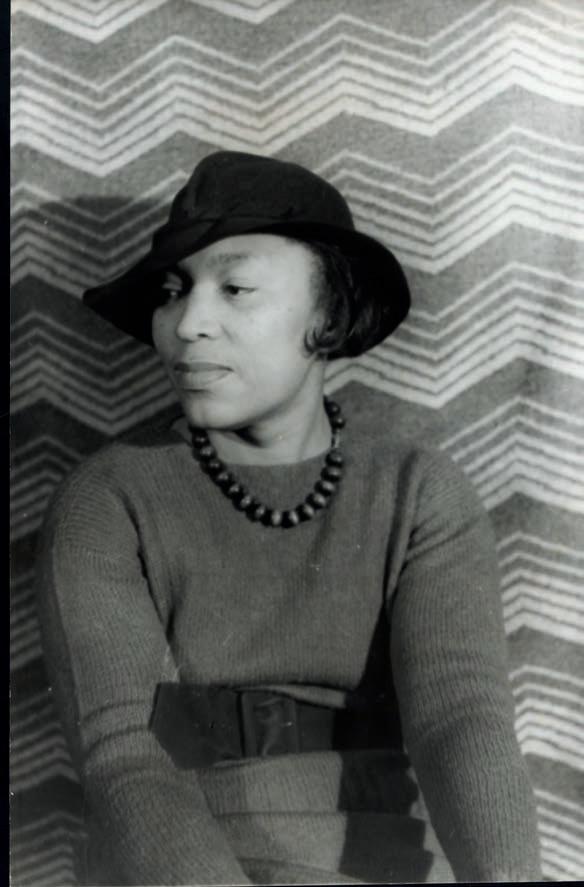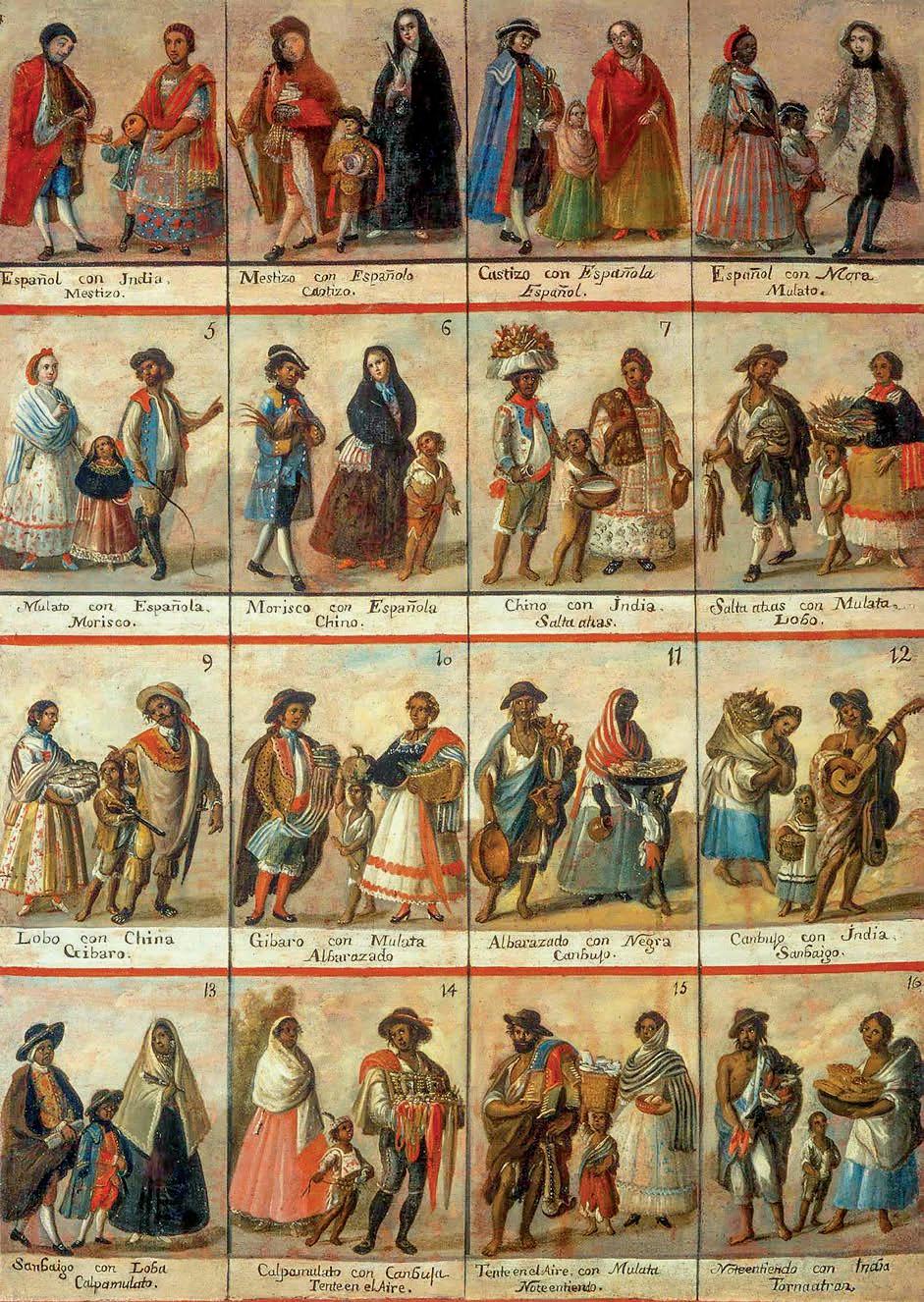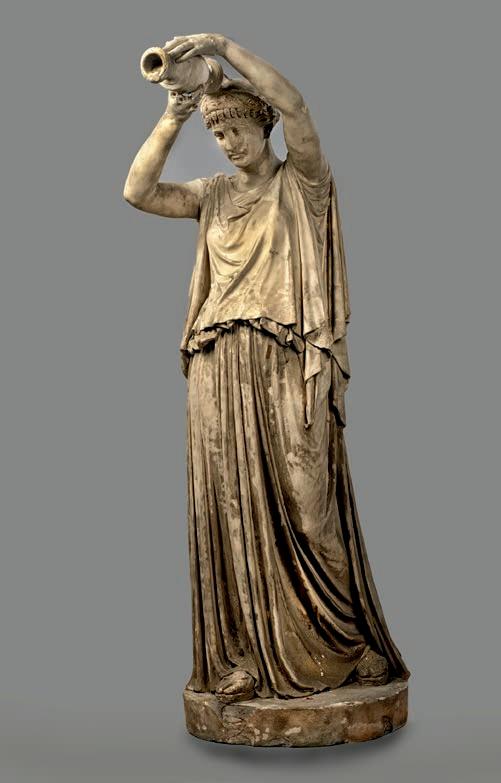
9 minute read
I, TOO, SING AMERICA
During Black History Month, we highlighted teachers across several disciplines helping students explore the Black experience in the United States and abroad, from Langston Hughes’s poetry to the pandemic’s racial disparities.
THE PRIDE AND INFLUENCE OF BLACK EXPRESSION
English teacher Louis Smith has been teaching and honing his course on Harlem Renaissance literature since 2016, a growth process that has yielded vital experience he has drawn upon since becoming director of the Office of Community and Equity this year. He strives to present a full picture of the rich history of pivotal cultural movement and the evolution of Black and African American expression. “The idea of the course is to celebrate, revel in, understand, and steep in this panoply of voices that came out of the movement,” he says.
To contextualize what in the 1920s and 1930s was a revolutionary act of celebrating Black joy, pride, and culture, Smith begins by teaching “Incidents in the Life of a Slave Girl,” written by former enslaved woman Harriet Jacobs and published in 1861 by abolitionist and benefactor L. Maria Child.

In the Voices of the Harlem Renaissance class, students read works by — and about — the legendary Zora Neale Hurston.
Smith uses the book, which aimed to spark activism among abolitionists and increase pressure to end slavery, to teach about the shifting voices of Blackness, from enslaved people to ultimate purveyors of culture during the Harlem Renaissance. “Over time, you see Black expression in the United States start changing,” Smith tells his students.
The poetry of Langston Hughes is an anchor for the course, with students studying more than a dozen of his works, including his first published poem, “The Negro Speaks of Rivers,” and his famous depiction of racism in “I, Too.” Smith also introduces his class to Zora Neale Hurston as well as some of the less well-known writers of the time, including Countee Cullen, Alice Dunbar-Nelson, and Angelina Weld Grimké.
Beyond text analysis, the course also examines the influence of Harlem Renaissance writers on the arts, the Civil Rights movement, and leading public intellectuals such as Henry Louis Gates Jr.
Most of the students who sign up for the elective are students of color. “It changes the dynamic of so many conversations about race,” says Smith, as students from all backgrounds grapple with their own identities and step more into themselves. “It’s the highlight of my day,” he concludes.
WHAT “REAL WORLD” DATA TELL US ABOUT RACE
On a cold February day, in Townsend Hall’s Sperry Lecture Hall, Mike McGowan showed his macroeconomics class a series of slides, each with a chart or data illustrating an economic indicator — family wealth, unemployment, homeownership — for two countries. The numbers and graphs illustrated a robust, thriving economy in Country A and a much less healthy Country B.
McGowan asked his students to guess the two countries represented. Country A was surely the United States, they concluded, while Country B was likely Canada, or maybe China.
None of their answers was right. The figures bundled together as Country A reflected the economic status of white people in the United States. Country B, meanwhile, captured the financial well-being of U.S. Black and African American individuals and families. Several students appeared stunned. “The total unemployment for Black workers is astronomical,” one said.
McGowan has sprinkled such lessons in real-world economics into his classes all year. Prompted by the summer’s racial-justice protests, he has found ways to show how the economy works differently for families across America, and how it doesn’t always benefit people in the same way.
McGowan’s micro- and macroeconomic courses continue as a college-level introduction to the subject and preparation for the AP exam. But this year, his classes have explored economic fundamentals through, among other topics, the deepening racial disparities during the pandemic; pay differences between races and genders; and the preponderance of women and people of color in the service industry. Recently, he’s introduced a unit in which students study Somalia, Botswana, and other developing countries around the globe to see how various economic engines function.

Among the real-world data analyzed in Mike McGowan’s economics classes: the persistent racial disparity in average wealth in the United States. (Source: Urban Institute)
“So much of what we typically do is within the U.S. context,” he says. “One of my big goals is to give them a more global perspective.”
Such new additions to his curriculum stem directly from his reflections on last summer’s protests. Reading economic analysis and listening to podcasts, he found that economists have begun to seriously study gender and race only in the past decade or so. The field itself is hardly diverse; only about 4% of the doctorates awarded in economics go to Black or African American scholars, he discovered.
He chewed over such findings with a former colleague at a London school where he worked previously, and the two of them pledged to try new approaches in their courses. “We decided we had to do something in our classes to respond to the events of the summer,” McGowan says. Some of his students may not go on to study economics in college, but by broadening his course’s focus, McGowan aims to give them a sense of how the economy can reflect and contribute to society’s injustices. He also hopes that by showing how the study of economics touches on significant issues in society, he can attract more students — and more students of color — who might otherwise see his classes as dry number-crunching. “I hope I can recast the image of economics so that more kids see it as worthwhile and important to how we live,” he says. This year’s work, he says, is just the beginning. “I feel like I’ve just barely scratched the surface. Let’s see where we are in five years.”
WHY THE DIFFERENCE BETWEEN HUMANS IS ONLY SKIN DEEP
Several years ago, history teacher Mike Reynolds and science teacher Ashley Taylor were among faculty exploring interdisciplinary teaching. The two brought together their biology and history classes for a week to explore the science that underlies outward physical differences between humans and how ideas about race were created and evolved in the United States. They later did a presentation together at the School’s annual MLK Day Symposium, which led to their semester-long elective called Biology and the Human Past. “If you look at genetics, human beings are 99.999% the same,” Reynolds says. “There’s not a lot of scientific difference between human populations.” Yet the color of someone’s skin has been used for hundreds of years to justify slavery, segregation, and other forms of oppression, whether through Spain’s caste system started in the 15th century, slavery and Jim Crow laws in the United States, or apartheid in South Africa. Says Reynolds: “Race is a construct that humans have often used to categorize each other in order to elevate whites and keep people of color subordinated.”
Early in the class, students examine the evidence that skin color is the result of evolution. They learn that the first generations of humans, who lived along the equator, produced more melanin, the skin’s dark pigment, because it screens the sun’s harmful ultraviolet rays. As humans moved to latitudes with weaker sunlight, their skin grew lighter as it lost melanin to allow the sun’s rays to penetrate and generate needed Vitamin D. (Interestingly, the Inuit have dark skin despite the lack of strong sunlight in Northern Canada and Greenland, where they live; their bodies haven’t had to adjust to a deficiency of Vitamin D, as their diet of fish and marine mammals is rich in the compound.)

This painting of Spain’s racially based caste system in the 18th century is part of an EHS class study of how race has been used throughout history to create hierarchies. (Source: Museo Nacional del Virreinato, Tepotzotlán, Mexico)
During the course, students examine so-called “race science” promoted from the mid-19th century into the 20th century. This included the eugenics movement as well as far-fetched efforts to document physical differences — the size of the brain cavity, for instance — that were said to explain the superiority of whites. “These people were professors at Harvard and some of the most important schools in the country,” Reynolds says. “Mainstream science was basically looking for ways to try to justify these old racial categories that had been around for hundreds of years.”
Amy John-Terry ’21 so enjoyed the course’s interdisciplinary approach that she chose a college for next year where such classes are the norm. “I have always been more of a ‘right brain’ person,” she says. “However, this class showed me that there is no need to differentiate between my analytical and creative side, and I am a more empathetic and stalwart student when I can use both synchronously.”
A key lesson for her: the power of language. “We dove deep into how we must be deliberate in the words we use to describe people to stop perpetuating stereotypes and hate through our speech,” she says.
CONNECTING ALABAMA TO ANCIENT GREECE
During a unit of her class for sophomores on literary genres, English teacher Millie Smith asks her students to compare the play “Antigone,” by Sophocles, with the novel “Homegoing,” by Yaa Gyasi.
“Antigone,” published around 441 B.C., tells the story of Oedipus’s daughter, who dies fighting for the right to bury her brother, the disgraced Polyneices. “Homegoing,” published in 2016, traces a single family through eight generations, focusing on various individual acts of civil disobedience to fight slavery, much like Antigone’s illegal burial of her brother. Each story explores how characters navigate and battle societal oppression as well as face difficult moments of family life.
Though both texts are centered on generational trauma and feature sisters in leading roles, the authors have little in common. Smith challenges her students to find commonalities between the stories of Sophocles, an ancient Greek, and the Ghana-born, 32-year-old Yaa Gyasi.

Millie Smith’s class studies the parallels between women facing family tragedy and oppression in the ancient Greek classic “Antigone” and Yaa Gyasi’s 2016 debut novel, “Homecoming.” (Source, Antigone photo: Smithsonian American Art Museum)
Throughout the unit, Millie says the students focus on how “a source of oppression in history isn’t just one moment.” Antigone’s struggles and death are just the latest tragedy in her family’s sorrowful story, while the main characters in “Homegoing” grapple with 300 years of oppression in their family’s history, beginning with the slave trade.
By creating a throughline from ancient Greece to 18th-century Ghana to modern-day Alabama, the parallel study of these two texts opens students’ eyes and minds to the common humanity we all share, regardless of time or place. Students also discuss the various ways in which societies fall short of ideals that they claim to strive for, leaving the burden of upholding those values (such as democracy, balance, and honor) to individuals.
As “Homegoing” progresses into the modern era and the students can see more of themselves in the characters, “they start to think about how their lives are generationally connected,” Smith says. The class discussion, she adds, focuses on “the way that the present is connected to the past” and how that might show up in their own lives as well, either through their shared traumas or privileges.

Millie Smith’s class studies the parallels between women facing family tragedy and oppression in the ancient Greek classic “Antigone” and Yaa Gyasi’s 2016 debut novel, “Homecoming.” (Source, Antigone photo: Smithsonian American Art Museum)







